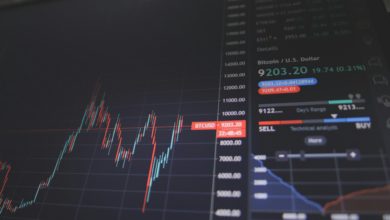Gold Extends Rally as Traders Bet on Fed Rate Cut

Gold prices surged again on Friday, capping a powerful four-month winning streak and edging toward record highs as expectations for a December rate cut solidified. Futures settled near $4,240 per ounce, putting bullion within reach of October’s all-time peak, as investors rotated into assets that historically outperform when borrowing costs fall.
The renewed bid for gold demonstrates a broader shift in macro sentiment. A softer dollar, a cooling labor backdrop, and dovish commentary from Federal Reserve officials have convinced traders that the central bank is prepared to ease policy at its next meeting. According to futures market pricing, a quarter-point cut is now viewed as the base case — a backdrop that has historically offered upside for precious metals.
Rate-Cut Momentum Drives Demand
Reports point to the same core dynamic: weakening economic momentum is meeting with a Fed that appears increasingly comfortable with an inflation path that is easing — just not as quickly as previously hoped. That combination has fueled a rapid rise in rate-cut expectations and pulled Treasury yields sharply lower.
Since gold has no yield of its own, falling interest rates raise its relative appeal. Analysts noted that this month’s leg higher coincides with the steepest decline in real yields since early summer, giving bullion a clean catalyst after a brief dip in early November. The U.S. dollar — which typically moves inversely to gold — has also softened as markets anticipate a looser policy stance heading into year-end. A weaker dollar lowers the cost of dollar-denominated commodities for international buyers, further supporting demand.
Fiscal Policy and Inflation Fears Add Fuel
In addition to monetary expectations, fiscal policy headlines helped fuel the rally. Comments from President Trump on Thanksgiving reiterating his ambition to eventually eliminate the U.S. income tax — replacing it with tariff revenue — renewed inflation concerns across policy circles and trading desks.
While the feasibility of such a plan is far from clear, analysts at multiple banks told Bloomberg and CNN that the rhetoric underscores an environment of persistent deficit spending and pro-growth fiscal priorities. Those policies can raise long-term inflation risks, strengthening gold’s appeal as a hedge. Market strategists also pointed to continued central bank demand — a powerful structural tailwind. Reuters reported earlier this month that global central banks remain on track for one of their largest years of net purchases in decades, driven by geopolitical fragmentation and efforts to diversify away from the U.S. dollar.
Wall Street Raises Its Targets
Despite a sharp, short-lived sell-off earlier this month, Wall Street remains overwhelmingly bullish. Analysts at Goldman Sachs reiterated their view that declining rates and persistent reserve diversification could drive gold to $4,900 by late 2026, with upside if private investor flows accelerate. UBS also raised its target, forecasting $4,500 by mid-2026 and citing gold’s resilience during global policy uncertainty.
Traders note that the precious metal has already surged more than 60% this year, making 2025 one of its strongest annual performances since the late 1970s. Its strength relative to equities — especially as the Nasdaq and S&P 500 struggle through bouts of volatility — has only heightened its role as a portfolio stabilizer.
Looking Ahead
The path forward for gold depends almost entirely on next month’s Fed meeting. A confirmed December rate cut would likely give bullion a fresh tailwind into early 2026, especially if the U.S. dollar continues to weaken and Treasury yields remain under pressure. At the same time, any indication that inflation could re-accelerate — whether due to fiscal expansion, supply chain risks, or geopolitical flare-ups — would amplify gold’s traditional hedge appeal. For now, bullion is firmly back in the driver’s seat. If the macro backdrop continues to evolve in gold’s favor, traders say a retest — and potential break — of October’s record high looks increasingly plausible.




